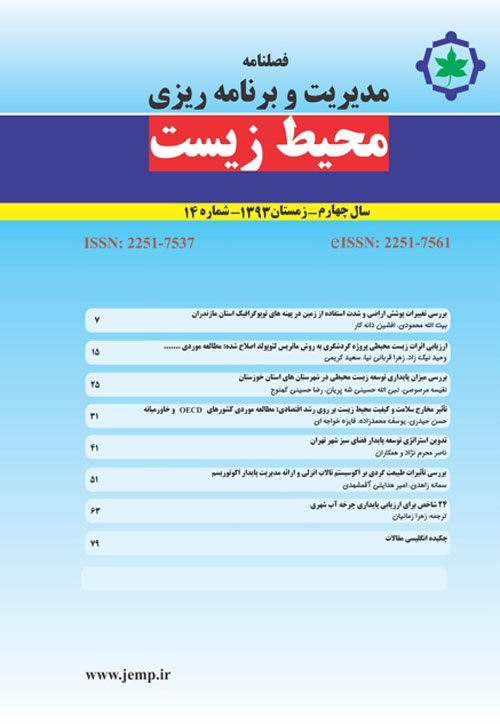Evaluating Mangrove Forests Change Process of Nayband Marine-Coastal National Park within the interval of 1975-2013 using Satellite Images
Author(s):
Abstract:
This study is aimed at evaluating the change process of Mangrove Stand of Nayband Marine-Coastal National Park in Bidkhoon and Basatin bays using Landsat satellite images within the interval of 1975-2013 and comparing the said process to actual land reality. Study of the respective changes in the area of the Mangrove of the first marine-coastal National Park in IRAN, which is identified as the latest scatted trees in the north hemisphere, may establish suitable grounds for more desirable management of life ecosystems, playing a pivotal role in the life of aquatics and local communities and the ones. Remote sensing science is among the sciences, which provides the researchers with valuable images for study the changes occurred on the earth. Herein this research, such meters as MSS, TM, +ETM and OLI of the aforesaid satellite as of the years 1975; 1990; 2000; 2003;2004; 2005; 2006; 2007;2008;2010; 2012 and 2013 and after applying the required corrections, removing the respective errors, combining the bands and georeference, using the image of the year 2012 as basic and fusion image and applying the supervised classification using maximized likelihood method and IPVI index, the said changes were studied. In order to compare the said changes to actual earth reality, Google Earth satellite images of the year 2004 as well as topography using GPS method of the years 2010 and 2012 were also used.. This study has also revealed a noticeable descending decrease of Mangrove Stand in spite of provisional plantation of shrubs in Basatin bay and decrease in density, looseness of tree stands and a trivial increase in the area of Bidkhoon Bay (Asaluyeh). Relying on the results obtained from the said study, the area of Mangrove Stand in Bidkhoon Bay in the year 2012 was calculated with an area of 1119072 m2 using GPS method with a supervising classification of maximized likelihood as 1231200 m2, and IPVI index with 1317600 m2 and in the said year, the area of Basatin Bay was calculated with an area of 466644 m2 using GPS w with a supervising classification of maximized likelihood as 88200 m2 and IPVI index was calculated with an area of 63000 m2. The change process of the forest has naturally been decreased and this is actually evident in Basatin Bay due to serious changes caused by human’s activities. Planting Mangrove shrubs in some years has somehow compensated for the said defect and upon passage of a few years, the said descending process will come out once again.
Language:
Persian
Published:
Journal of Environmental Management And Planing, No. 11, 1393
Page:
47
https://magiran.com/p1320863


